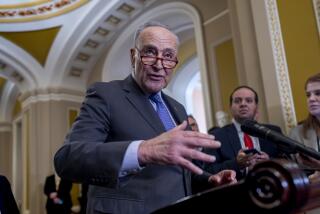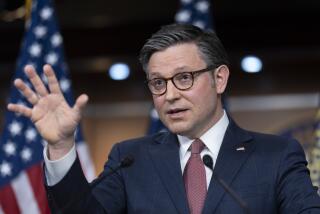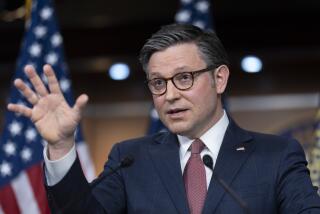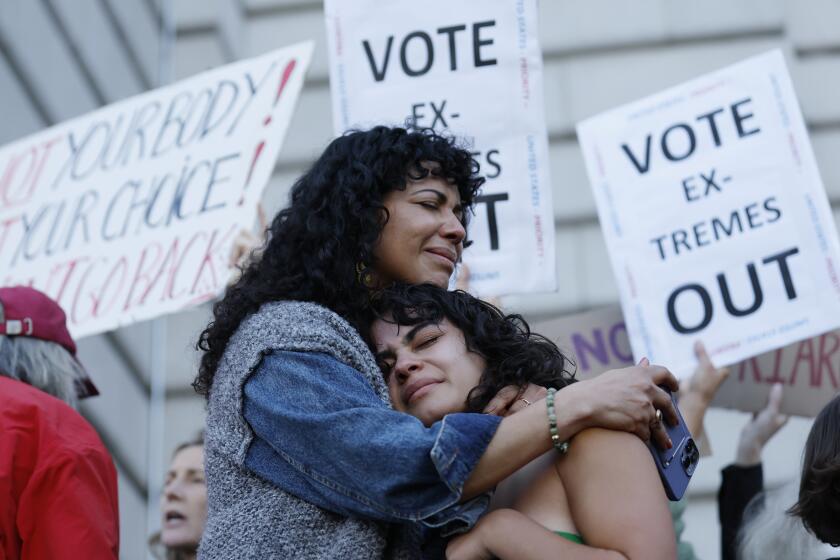A lot at stake for small-town America
The budget-cutting fervor in Washington is forcing lawmakers to reconsider not just the total amount they spend, but also where the dollars are going and why. The recipients with the most to lose are the ones in rural America, who are almost twice as reliant on federal largesse as city dwellers and suburbanites. A recent fight over subsidies for flights to small-town airports is a good example of the battles likely to come. It also illustrates the trade-offs that Congress will confront as it tries to close the yawning federal budget gap.
Depending on how one looks at the data, rural America is receiving either too rich or too scanty a share of the federal fisc. On the one hand, six of the 10 states where the federal government spent the most per capita are rural, and people living on farms and in small towns collected 20% more on average in federal benefits than city dwellers. On the other hand, that’s largely because rural areas have higher concentrations of the elderly and the disabled. According to the Rural Policy Research Institute, rural areas collect fewer dollars per capita of the money spent on infrastructure and other forms of “community building.”
Research by the institute and the U.S. Department of Agriculture has shown that some federal investments in rural areas, such as loan guarantees for businesses and grants for infrastructure, yield significant growth in local economies and personal incomes. But it’s hard to say those federal dollars would have produced better or worse results if they’d been spent in metro areas. The rationale for the investments seems to be based more on fairness and inclusion than on raw economic efficiency.
That’s particularly true for the Essential Air Service program, which House Republicans targeted for cuts as part of a stopgap bill to reauthorize the Federal Aviation Administration. When Congress gave airlines more freedom to set routes and ticket prices in 1978, lawmakers worried that commercial flights would stop coming to small-town airports. So they created a program that paid airlines to fly there.
About 150 of the country’s 3,500 small-town airports benefit from the subsidies, including a little more than 100 in the continental United States. The annual cost for the latter has grown in recent years; it’s now about $163 million. Depending on the number of flights, the subsidy per seat ranges from less than $50 to more than $3,000. And the actual subsidy per passenger can be much higher because the planes usually don’t fly full.
Supporters of the program argue that it’s vital to local economies because airlines wouldn’t serve those airports without the guaranteed income it provides. That’s because these airports serve so few people, the small commercial jets that fly there leave half-empty — or worse. And without passenger service, they contend, many businesses just wouldn’t locate in those communities. There’s some evidence to support them: A 1997 study by the USDA found that the local economy grew faster in a county if it was within 50 miles of an airport with scheduled passenger service.
But paying airlines millions of federal tax dollars to fly small, half-empty planes into rural airports isn’t the only way to connect rural communities with city transportation hubs. Some airports have negotiated their own deals with airlines to maintain service. Others have replaced big commercial airlines with upstarts. There’s also been a resurgence in intercity bus service. And investments in broadband can enable any community to become an on-ramp for e-commerce or a virtual extension of a major corporation — witness the call centers being created in such places as Holland, Mich., and St. Lucie, Fla.
It’s impossible to say with any certainty what would happen if the subsidies ended because the market has been so distorted by the federal government’s intervention. The problem, as Brookings economist Cliff Winston has noted, is that the introduction of subsidies created a dependence on subsidies. It wasn’t supposed to work out that way; the original plan was for Essential Air Service to last a decade, buying time for small-town airports to adapt to deregulation. Instead, it has become an ever-more-expensive fixture of aviation policy.
Lawmakers have talked about scaling back the program, increasing the required distance between a subsidized airport and a larger regional hub. That’s a sensible first step. In fact, House Republicans included changes along these lines in a stopgap bill to reauthorize Federal Aviation Administration programs through mid-September. That measure bars subsidies for airports less than 90 minutes from a hub, or where the average subsidy last year was $1,000 or more per passenger.
The Senate initially recoiled at even so modest a rollback and blocked the bill. The resulting stalemate forced the FAA to shut down all nonessential services. The impasse lasted more than a week before Transportation Secretary Ray LaHood told senators that any affected airport could apply for a waiver of the new rule, delaying the impact until after Congress revisits the issue next month. With that assurance, the Senate approved the House bill and President Obama signed it into law Friday.
The House’s attempt to reform the Essential Air Service may just be a negotiating ploy aimed at persuading Senate Democrats to make concessions on other issues, most notably a GOP proposal to undo a new federal rule making it easier for transportation workers to unionize. Nevertheless, the tussle illustrates how hard it is to end subsidies once they’ve been established. It’s not just inertia; there are powerful interests working hard in Washington to protect the status quo.
The savings sought by the House would hardly make a dent in the $1.5 trillion federal deficit. A select group of 12 lawmakers will try over the next few months to take a much bigger chunk out of the deficit by scrutinizing major entitlements, subsidies and tax breaks. Among them will be the federal farm program, which pours billions of dollars into rural America each year. Those payments have already been targeted for cuts by the White House and congressional leaders. Small towns would also be disproportionately affected by any reductions in Medicare or Medicaid benefits, simply because they have an outsized share of the poor and the elderly. As important as Essential Air Service may seem to its backers, the stakes for rural areas will soon be exponentially higher.
More to Read
A cure for the common opinion
Get thought-provoking perspectives with our weekly newsletter.
You may occasionally receive promotional content from the Los Angeles Times.










